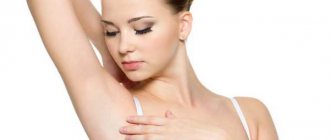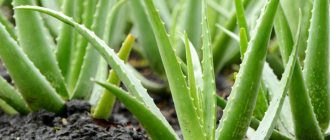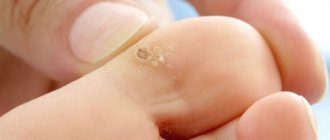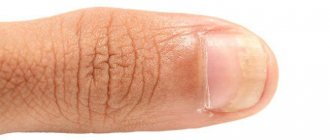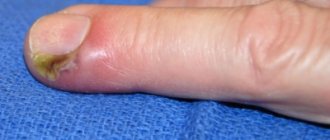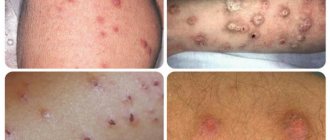We all understand that nail fungus, or onychomycosis, is a serious disease that needs to be treated. However, despite all reasonable arguments, most people, at the first suspicion of a fungus, do not rush to the doctor, get tested and begin treatment. A common excuse: the nail accidentally became deformed and changed color, it will soon go away. Are they right or wrong? What can nail fungus be confused with, is it necessary to treat the fungus, and is it possible to make a diagnosis on your own? Let's try to find answers to these questions together.
Treatment of nail fungus
Where can you get infected with onychomycosis?
As noted above, this pathology relates to an infectious disease. The fungus penetrates the nail structure from the external environment. Where can you catch onychomycosis?
The sources of infection are considered to be:
- Infected person. Some types of fungal microflora can parasitize not only the human body, but also exist on personal hygiene items and shoes. As a result, short-term contact can introduce a negative microorganism;
- Pets. In nature, there are more than a hundred species of fungi that can be transmitted from animals to humans;
- Public baths, saunas and swimming pools. Some types of fungal infection are able to reproduce without using living organisms. To become infected with pathogenic microorganisms, it is enough to visit public places with high humidity.
Preventive measures
You can protect yourself from re-infection with onychomycosis if you strictly follow preventive measures.
First of all, this concerns the rules of personal hygiene:
- Wash your feet every day, especially during the hot season;
- Use only your own towel and do not lend it to anyone;
- Do not walk barefoot in public places, including on the beach;
- Thoroughly disinfect pedicure tools, visit trusted beauty salons;
- Do not try on someone else’s shoes; after trying them on in a store, treat your feet with an antifungal agent.
It should be remembered that the detection of onychomycosis in one of the family members is a reason for all household members to strengthen preventive measures, as well as pay attention to disinfection of the house, especially carpets.
Even in the absence of alarming symptoms, you should treat your shoes monthly with antifungal agents: it is much easier to prevent nail fungus than to spend several weeks on unpleasant and expensive treatment.
What factors provoke the development of onychomycosis?
- Age group 60+;
- Diabetes;
- Thrombophlebitis of the lower extremities;
- Weak immunity. The presence of chronic diseases negatively affects the general condition as a whole;
- Uncomfortable shoes made from synthetic materials.
How does the fungus manifest itself?
In the initial stages of the disease, the fungus does not cause much discomfort. The deformation is reflected in the external state of the nail plate. Numerous spots and grooves of unusual color appear on its surface.
Identify several stages of the fungus. They include:
Infection. A fungal infection is fixed on the surface of dead skin scales. Gradually, microorganisms penetrate the horny epithelium of the nail plate.
Normatrophic. In this case, the nail gradually begins to fade. Its surface acquires a yellowish tint. This phenomenon indicates destruction of the structure of the nail plate.
The fungus feeds on tissues and nutrients. Over time, the nail plate begins to rotate around the edges. The patient develops an unpleasant odor and a burning sensation.
Hypertrophic. In this case, the yellowness completely covers the entire area of the nail. Transverse inclusions are observed along the perimeter of the plate. The nail becomes thick and loose to the touch.
Atrophic. The plate begins to crumble upon contact. As a result, the nail bed remains unprotected.
Onycholysis. This form is considered the most neglected of all listed. If the matrix was damaged during the disease, then the nail will not grow back in the future. The photo of nail fungus shows the degree of damage to the horny epithelium.
Diagnosis of the disease
If any changes are detected on the surface of the nail plate, it is recommended to seek medical help. The specialist will prescribe a series of procedures to accurately determine the type of fungus and the extent of damage to the nail bed. The patient must first undergo a series of tests:
Microscopy. A scraping is taken from the surface of the affected nail from the infected person. The only drawback of this diagnostic method is the impossibility of accurately determining the type of fungus.
Cultural diagnostics. The taken material is placed in Sabouraud's nutrient medium. This composition promotes the rapid growth and development of fungus in laboratory conditions. After this, the pathogen is distinguished by its color pigment, its growth rate and the type of colony.
This method has good sensitivity to various medications. After 5 days, the patient is given the results of the study, according to which the appropriate treatment is selected.
DNA test. This method allows you to detect the genetic code from a fungal infection. To do this, the scraping is studied for several days and its predisposition to the genus dermatophytes or candida.
Ointments with a disinfecting effect
The main treatment for fungal diseases is carried out with fungicidal agents. But in order to prevent the addition of infections, ointments with antiseptic and disinfecting effects are additionally used. They are applied to the skin and nail plates 2-3 times a day.
The most effective disinfecting ointments include:
- Inflarax;
- Salicylic ointment;
- Miramistin;
- Boric ointment;
- Betadine;
- Sulfuric ointment;
- Zinc ointment.
Miramistin and Inflarax are prescribed for dermatomycosis complicated by pyoderma and abscesses. These ointments kill bacteria that cause pustular rashes.
Medical therapy
We present several proven remedies for nail fungus that allow you to get rid of parasitic microorganisms in a short period of time. You should not delay treatment to preserve the structure of the nail plate and prevent its further deformation.
The course is calculated individually based on test results and the stage of nail damage. On average, it ranges from 30 to 70 days from the date of diagnosis.
Folk remedies for nail fungus are to use:
Soda. To do this, place 5 tablespoons of soda and 100 g of laundry soap in a deep container with warm water. It is necessary to steam the lower and upper limbs in this liquid for 30 minutes. During this time, the alkaline composition will help destroy up to 50% of pathogenic microflora.
Treatment of the nail plate with a soft nail file. It will allow you to get rid of the upper affected layer, thereby improving the processing process. After this, the surface of the nail plate is treated with juice from the celandine herb. However, it is worth noting that after such application the nail will acquire a dark black tint.
The previously damaged surface is treated with antiseptic compounds, which will prevent further infection of the damaged nail.
When treating with traditional methods, it is necessary to monitor the condition and appearance of the horny epithelium. If no changes are observed after 14 days, there is no point in further home therapy.
To destroy parasites, you will need to use medications that have antimicrobial and antifungal effects. It is worth noting that the dosage of the active substance should be selected by the attending physician. When calculating the required amount, the specialist will take into account the condition and degree of damage to the nail plates.
Tablets and capsules
Antifungal tablets are systemic drugs that destroy fungus throughout the body. Their components penetrate into the general bloodstream, so they create a drug load on the liver and kidneys. To avoid negative consequences, you should consult a specialist before using antifungal capsules and tablets.
Griseofulvin
The antibacterial drug has fungistatic properties. Griseofulvin inhibits the proliferation of epidermophyton, trichophyton and microsporum. Its components accumulate in nails and skin cells, which provides the body with resistance to mycotic infections.
Taking the tablet form of the drug is effective for onychomycosis, dermatomycosis of the feet and skin folds. The daily dose of Griseofulvin is 1 g. It is divided into 2 doses per day. It is not recommended to combine antimycotic therapy with cephalosporins.
Griseofulvin reduces the therapeutic activity of hormonal contraceptives.
Terbinafine
In low concentrations, Terbinafine inhibits the proliferation of the fungus, and in high concentrations it destroys the infection. Like other inexpensive and effective antimycotics, the medicine eliminates most pathogens of onychomycosis and dermatomycosis of the feet.
Features of taking Terbinafine:
- daily dose – 250 mg (1 tablet);
- course of treatment for skin candidiasis – 4 weeks;
- The course of treatment for dermatophytosis of the feet is 2-6 weeks.
If the fungus affects not only the skin, but also the nails, treatment is extended for 4-10 weeks. An overdose leads to dizziness, stomach pain, and vomiting.
Fluconazole
A powerful antimycotic that destroys up to 75% of the causative agents of fungal infections on the feet, nails, and in the interdigital area. The tablets are used in pediatrics for the treatment of mycosis in children over 5 years of age. The medicine can be used to prevent fungus during antibacterial therapy.
Broad-spectrum antifungal capsules are prescribed for:
- candida skin infection;
- dermatophytic onychomycosis;
- mycosis of smooth skin and feet;
- inguinal athlete's foot.
Tablets for foot fungus are taken once a week, 1 pc. The course of therapy is 4-6 weeks. For symptoms of onychomycosis, treatment is extended to 3-12 months.
Itraconazole
The synthetic antimycotic is produced in the form of capsules. It inhibits the synthesis of substances that make up the fungal shell. Effectively fights mycotic infections on the legs, smooth skin, and nails.
Itraconazole is a broad-spectrum medicine that is used in the treatment of local and generalized forms of fungus. Sensitive to it:
- Trichophyton;
- Candida;
- Cryptococcus;
- Cladosporium;
- Microsporum;
- Paracoccidioides;
- Aspergillus.
The principle of action of the tablets is the same as that of other drugs from the azole group. They interfere with the synthesis of enzymes from which the membrane membranes of fungi are formed.
Indications for the use of Itraconazole:
- systemic aspergillosis;
- mycosis of internal organs;
- sporotrichosis;
- cutaneous candidiasis;
- onychomycosis.
If the feet are affected, take 0.1 g of the drug once a day for at least 2 weeks. The capsules are swallowed whole immediately after meals.
Pimafucin
An antifungal drug based on naftifine is used to treat candidiasis. In low concentrations, the tablets inhibit the growth of the fungus, and in high concentrations they destroy its shell. To destroy a mycotic infection, take 1 tablet up to 4 times a day. The duration of therapy is 7 days.
An overdose of Pimafucin leads to diarrhea and skin rashes. The tablets should not be taken if you are hypersensitive to naftifine.




